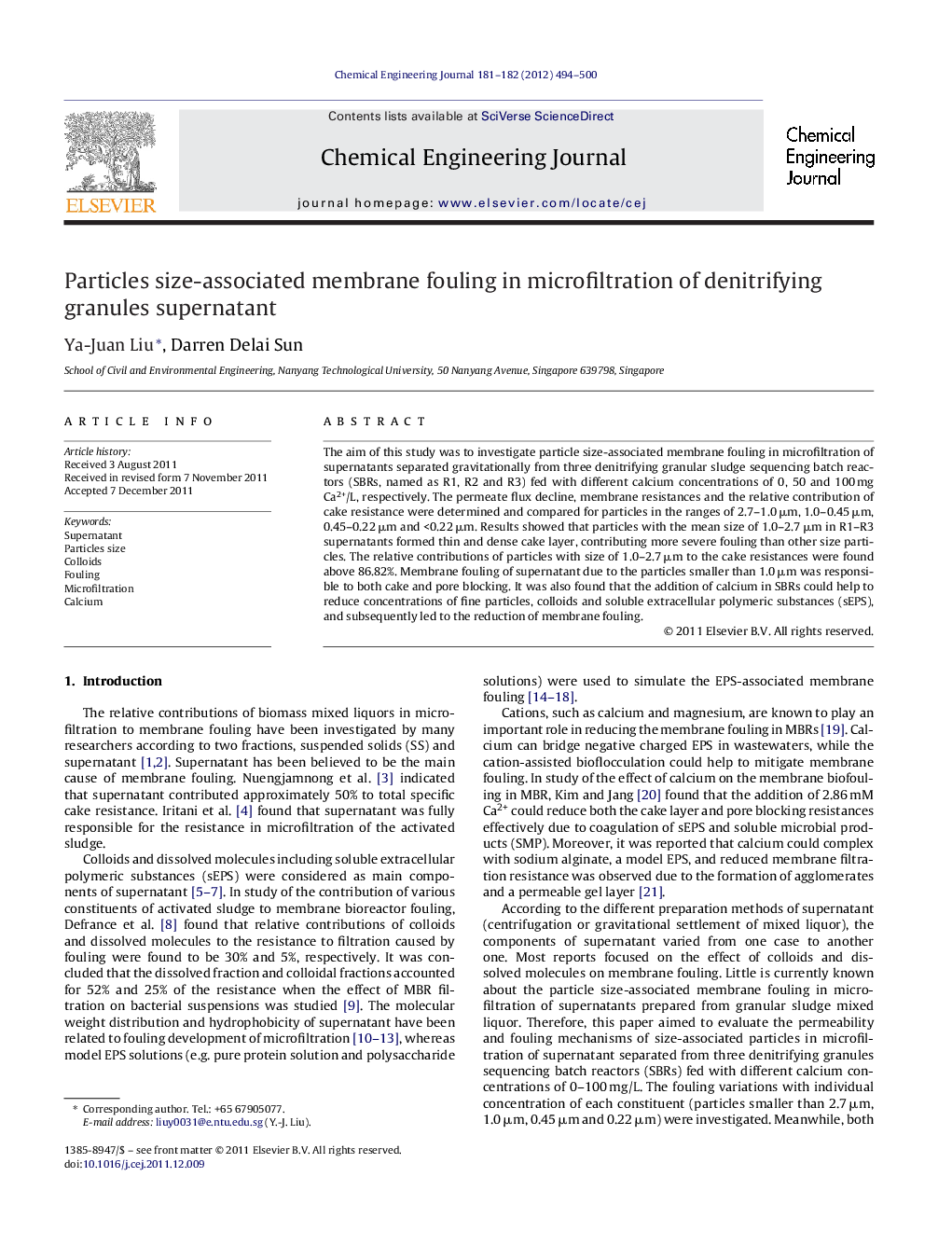| Article ID | Journal | Published Year | Pages | File Type |
|---|---|---|---|---|
| 150227 | Chemical Engineering Journal | 2012 | 7 Pages |
The aim of this study was to investigate particle size-associated membrane fouling in microfiltration of supernatants separated gravitationally from three denitrifying granular sludge sequencing batch reactors (SBRs, named as R1, R2 and R3) fed with different calcium concentrations of 0, 50 and 100 mg Ca2+/L, respectively. The permeate flux decline, membrane resistances and the relative contribution of cake resistance were determined and compared for particles in the ranges of 2.7–1.0 μm, 1.0–0.45 μm, 0.45–0.22 μm and <0.22 μm. Results showed that particles with the mean size of 1.0–2.7 μm in R1–R3 supernatants formed thin and dense cake layer, contributing more severe fouling than other size particles. The relative contributions of particles with size of 1.0–2.7 μm to the cake resistances were found above 86.82%. Membrane fouling of supernatant due to the particles smaller than 1.0 μm was responsible to both cake and pore blocking. It was also found that the addition of calcium in SBRs could help to reduce concentrations of fine particles, colloids and soluble extracellular polymeric substances (sEPS), and subsequently led to the reduction of membrane fouling.
► Particles ranging from 1.0 to 2.7 μm in supernatants contributed severer fouling. ► Membrane fouling of P2.7 of R1–R3 followed the cake filtration model. ► Fouling of P1.0, P0.45 and P0.22 was best fitted to intermediate blocking model. ► Addition of calcium greatly increases the particle size due to the aggregation. ► Addition of calcium could reduce the fouling of P2.7, P1.0, P0.45 and P0.22.
